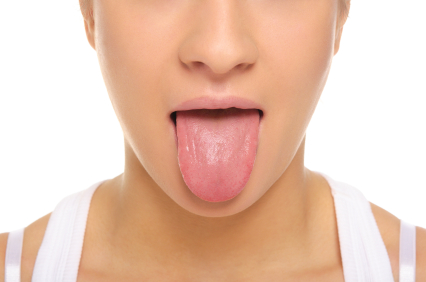Tongue anomalies

The tongue is one of the most interesting muscle complexes in the body. Comprising a total of eight muscles, the tongue is a forceful masticatory aid. It is highly vascular and richly supplied with nerves. It is primary in tasting food, cleaning teeth, speech and swallowing.
The tongue is a harbour for many bacteria and is one of the main sources of bad breath. Despite this, many people neglect their tongue by forgetting to clean it. Brushing your tongue softly twice a day with either a soft toothbrush or a specialised tongue cleaner can help reduce your risk of the following tongue phenomena.
Glossitis
Glossitis is inflammation of the tongue, making it swollen and often sore. Alongside this, the tongue can also change colour depending on the aetiology (cause) of the glossitis. Instead of the normal bumpy texture of a healthy tongue, someone with glossitis is likely to notice their tongue is smooth and lacking any definition normally brought about by the presence of papilla (taste buds).
The cause of glossitis is not necessarily through the lack of oral hygiene, although regular cleansing definitely removes a risk factor for the condition. While smoking, alcohol and spicy foods can sometimes trigger the condition (or exacerbate it), glossitis can be brought about through a variety of causes including bacterial, fungal and viral infections, allergic reactions and skin conditions. Glossitis has also been associated with types anaemia caused by nutritional deficiencies.
Glossitis is normally diagnosed through a simple examination and treated through the removal of the irritating factor: this is through either anti-fungals, anti-bacterials, avoiding allergens and triggers alongside adopting a high standard of oral hygiene. Smoking cessation is always encouraged, as is investigating any possible anaemia and dietary deficiencies.
Glossitis usually responds well to these interventions but can become more serious in some situations. Medical intervention is required if glossitis reaches such an extent that breathing, swallowing and talking become difficult.
Hairy Tongue
Hairy tongue sounds like a particularly unpleasant condition. It is mostly caused by a build up of bacteria or fungus around the papilla of the tongue, causing them to elongate. Hairy tongue is normally associated with a condition called black tongue and the two are often merged together as ‘black, hairy tongue’. As the tongue papilla elongate they trap more food and bacterial products, staining them black, brown, yellow and even green.
Black, hairy tongue literally looks like black fluff growing along the topside of the tongue, though it can be found in other areas, like the tip. The condition is usually asymptomatic, though some people experience a tickling sensation, gagging, bad taste and halitosis.
A number of risk factors have been associated with hairy tongue. These include, poor oral hygiene, smoking, drinking alcohol and having a particularly dry mouth. The condition may also be drug induced in some cases.
Treating hairy tongue is relatively simple and usually involves improving oral hygiene and stopping smoking. Sometimes anti-fungals and anti-bacterials may be prescribed and in really rare cases the papilla can be surgically removed.
Posted in: General Dentistry
Leave a Comment (0) ↓
